Предварительное сообщение об исследовании
алфавитных структур. Мифы как исторический источник.
It was long ago noticed that in the Phœnician, Greek and Latin or Roman alphabets there is a repeated sequence of the letters as vowels, labials, gutturals and dentals. This sequence is well displayed by Professor Petrie, in arranging the letters on a square table like the old "Horn-book" board for teaching children their ABC. (Wadell, L.A.: 1927, The Aryan Origin of the Alphabet, Luzac & Co, London)
(find a scientific manager (научный руководитель, но моими руками водить не нужно никому, пусть своими проще водят, раз такие мастера) to find for you that Petrie thing and so leave lacunas the other author would fill in)
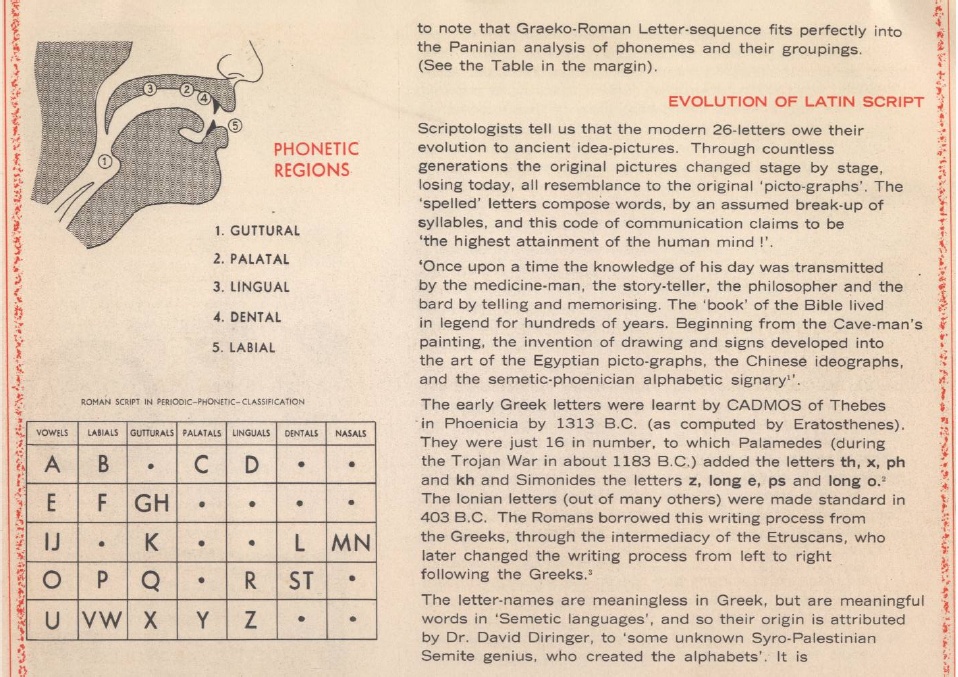
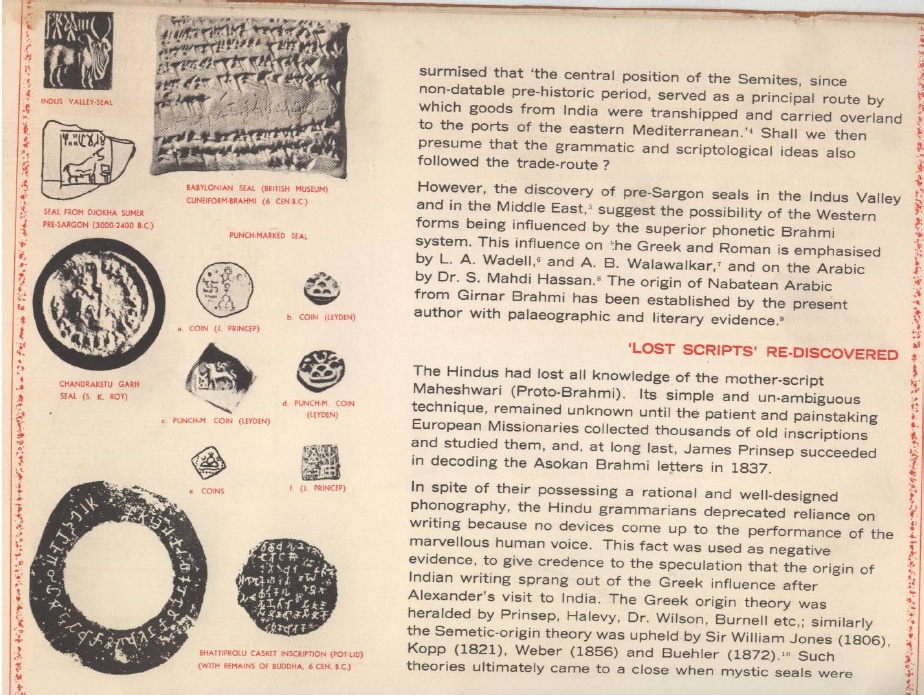
(научный руководитель может изучить упомянутые труды и добавить суть дела оттуда)
They are also wrong there when they call velars guttural, because the next image is correct:

another evidence of the existence of that thing ever known is actually alphabetic boards for challenged individuals:
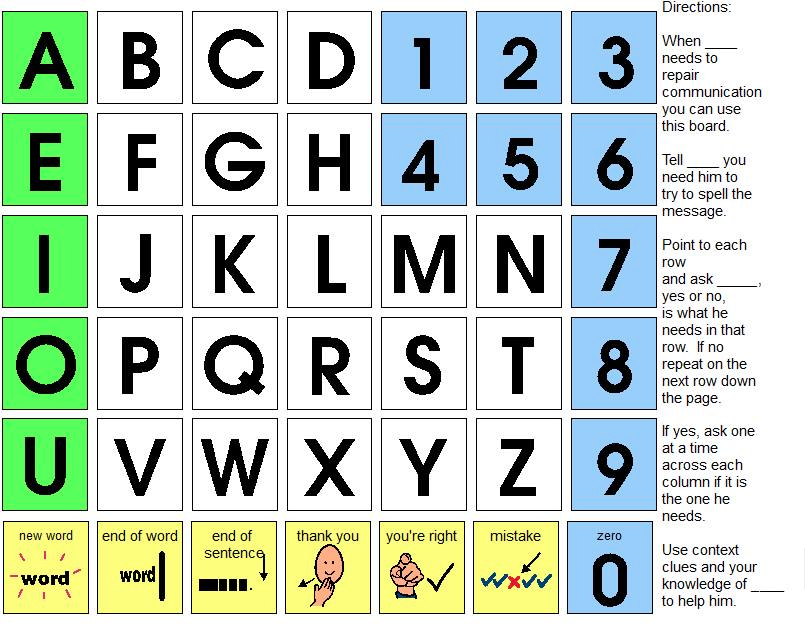
and in whatever secret chambers this sacred knowledge is held, I could only find the practical examples of it and not actually good theoretical works of why it is such and who have invented it this way,

(предыдущие изображения из открытых источников, но могут быть запрещены копирайтом, научный руководитель может быть знает как подобные вопросы решаются если изображения других авторов используются в академической литературе)
so I dove into it to deliver you the explanations for the position of each and every letter, because arranged like this they're definitely not arbitrary:

and there's more, buckle up:

It was long ago noticed that in the Phœnician, Greek and Latin or Roman alphabets there is a repeated sequence of the letters as vowels, labials, gutturals and dentals. This sequence is well displayed by Professor Petrie, in arranging the letters on a square table like the old "Horn-book" board for teaching children their ABC. (Wadell, L.A.: 1927, The Aryan Origin of the Alphabet, Luzac & Co, London)
(find a scientific manager (научный руководитель, но моими руками водить не нужно никому, пусть своими проще водят, раз такие мастера) to find for you that Petrie thing and so leave lacunas the other author would fill in)


(научный руководитель может изучить упомянутые труды и добавить суть дела оттуда)
They are also wrong there when they call velars guttural, because the next image is correct:

another evidence of the existence of that thing ever known is actually alphabetic boards for challenged individuals:

and in whatever secret chambers this sacred knowledge is held, I could only find the practical examples of it and not actually good theoretical works of why it is such and who have invented it this way,

(предыдущие изображения из открытых источников, но могут быть запрещены копирайтом, научный руководитель может быть знает как подобные вопросы решаются если изображения других авторов используются в академической литературе)
so I dove into it to deliver you the explanations for the position of each and every letter, because arranged like this they're definitely not arbitrary:

and there's more, buckle up:

This one also has L and R at the left and
right corners.
And this one I have never met, I found it trying to arrange them into tetraktis and then I saw something and so I yawed, sheered, veered off course. All three words are knew to me, I wanted to say detract and it has some completely different meaning, my english is probably poor especially when I speak. So I understand that I have to raise russian science, but then I understand that I must make science international, and wow!
and years later I noticed that the previous one can also arrange its L and R semantically:

but usually only three articulatory elements can be distinguished by the order of the structure:

That greek table is famous, but if you can't read it, it generally tells that η was read as [h] in the most of greek dialects. And only ionian read it as a vowel, and that foreign troyan side of the sea somehow became the norm instead of Attic, which stands exactly for Athenian
(научный руководитель может добавить более точной научной информации)
and the text about it is the myth which is thus the second in the list of myths speaking of alphabetic structures, but then it can be recognized as an example of early historic science, but then what it describes naturally have roots in mythological, religious, mysterian tradition. And the myth number one is int the top right corner of that image, but also because it's off the margin on most computers, it is so great and relevant that I will repeat it in here: The Three Fates or, some say, Io the sister of Phoroneus, invented five vowels of the first alphabet, and the consonants B and T.
And if we recognize those B and T as the labials and linguals all the consonants divide into, you can see that this otherwise obscure myth speaks exactly of the structure concealed in the alphabet.
And this structure can be seen even in ugaritic alphabet, the most ancient abecedary discovered so far:
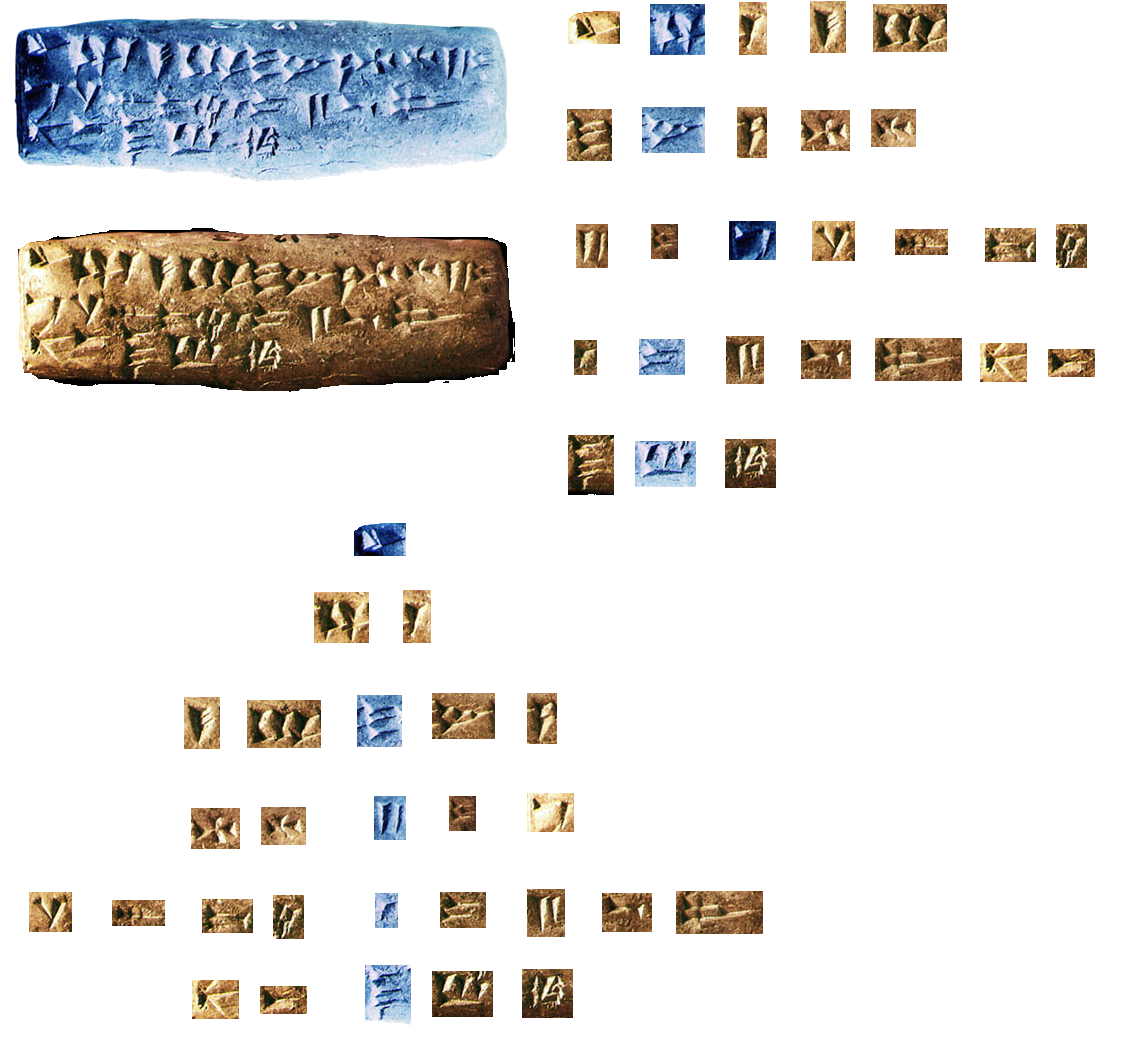
and this order of vowel-labial-linguals can be even seen in roman numerals:

and what is interesting about roman numerals is that if you consider V not Vijf but Vier, the set adds up not into 666 (1 5 10 50 100 500) but into 365 (1 4 8 32 64 256) only I still don't know what astronomic or rather astrologic significance it could make. Both V and X also look more like 4 and 8 than 5 and 10.
Some alphabet have only traces of this system having added additional letters here and there, the most extreme case of such mess is armenian, but the reasons for such a situation is actually found in the best historic witness: diaries of the witnesses of the processes of adding the letters: the direct students of Mashtots write that Mashtots reconstructed armenian alphabet from old armenian palimpsest (or maybe was what they call "buried writings" the books not burnt but buried under the ground somewhere. I think it was palimpsest, because some Daniil had that book with what they referred to as buried writings. So they write that at first armenian alphabet went in greek order (and notice that greek order is deviated from the common structure already) and that Mashtots taught it that way for three years. And that then he added some additional letters and if you compare armenian to greek you can still see those very letters. (Хоренаци, кн. III, 52. & Корюн, 6)
(научный руководитель возможно сможет найти название книг на армянском)
Another unusual historic sourse happens to be Sefer Yetzirah, speaking of first chapter of the Bible actually speaking of the conception of alphabet.
(a large work to combine all the versions of sefer yetzirah and to actually analize what exactly it tells of those letters to correct the following chapter if necessary)
Sefer Yetzirah names those three types of letters three mothers (and it is a rabbit hole into whole old world of the internationally worshipped tridevi under different names. And my guess so far is that the idea of trinity being thus prechristian was influenced by three phases (faces) of the Moon. And that the shapes of the moon could influence the shape of the letters ƆѲC is the way I see it. What ABC used to be. Possibly. As a hypothesis. But the main point of this article is not merely a hypothesis but a complicated theory with lots of factual material in its confirmation.
bd (also because russian alphabet has a distinct tendency to place voiced consonants
pq in the first half of the alphabet, and the voiceless are all in the second half of it)
this graphicoarticulatory coincidence so to say could be the other level of that BT thing. The b and d often reflect eachother as if they were those Ɔ and C becaue another historic abecedary doesn't seem to distinguish between C and D having only þ in that positon, as if it was both Г and D and its third position and actually the shape could be more close to Δ and ᚦ is proverbially third and it is third in futhark, which could be just mistransliterated alphabetic sequence, but it's way too much to take in one bite, and I'm going to tell something more on the subject. First that alphabetic runestone I mentioned few lines above:

and looking how ᚮ is double ᛆ which is ᚑ as double ᚐ in ogham, and in dannish aa is o, it makes me think that this is all related in this way, and the structure of this thing tells that these are all local developments of the same prehistoric structure all secrets of which are yet to be discovered, I have only discovered some of them. Probably most of them, but nevertheless I'm awed by the vastness of the structure I began discovering. It's of the size of human culture, taking shape in all sorts of human activity from knitting to singing, from astrology to every other branch of genuine magic.
Ogham and runes both divide their letters into groups with similar names: aicme and aettir (ir is the plural suffix) which make them much archaic than any other writing system. But jewish myth of sefer yetzirah still keeps hebrew one of the primal places in the alphabetic pantheon as one of the most preserved writing system. And actually Sefer Yetzirah also divides letters into three groups, but those are uneven groups, they're 3, 7 and 12: 3 mothers, 7 doubles, 12 simples:
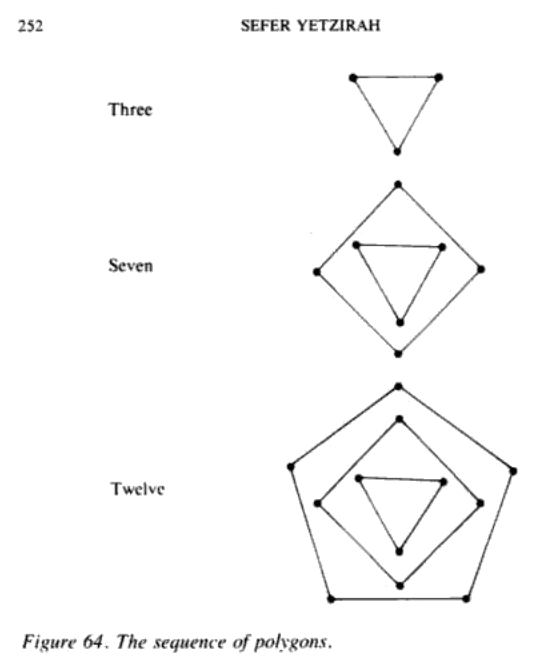
The three are א מ ש.
The seven are ב ג ד כ פ ר ת.
The twelve are ה ו ז ח ט י ל נ ס ע צ ק
And if that sequence is correct and if yes, than what letters from one group are actually the letters of the previous group is not always easy to say. This is the most raw part of this thing, later maybe it will be more clear.
But just as runic division letter into aettirs, which can be groups of 8 (so called elder futhark) 6 (the 18 of the runic alphabet shown above divide by three groups in 6 per one, which could stand for 3 dice) or 5 as Bureus bring them, and Bureus actually supports the dice hypothesis by the image of so called falling stone, which could be scheme of the three dice:

And then side opposite to the rune in the centre of each of these three crosses is empty, as we don't make today, but you still can see emptly slots in dominos, which are definitely related to dice at least graphically they share some tradition)
And another mythological source is the plebean tree of life, which is arrangement of roman alphabet using pythagorean tetraktis which I found at a site of some magician. And I found that the 18 letter alphabet can be aranged along those lines much more consistent. It is also a raw piece of research, I jsut give an overview of what I am digging so far:

And because that plebean tree of life marks each letter with whether element or planet or constellation, they can be compared to the three groups of letters from Sefer Yetzirah which does the same.
(научный руководитель может поразвлекаться, или я сам к этому вопросу вернусь)
And plebean doesn't mean something low. It is the aboriginal population of Rome. Patritians were the superstrate.
And if tetraktis was the tree of life, it reflects the norman myths of the tree of life having three roots.
And that myth also told about the great snake guarding that tree. And it was that very tree upon which Odin invented runes. And it reflects the myth of argonauts, which raises the question what golden fleece actually was. Wasn't it some bearded parchment with golden letters upon it, because it is much better a reason to take that dangerous quest than just some fur with trace of gold. Especially because in the east fleece is runo.
So what I'm saying here is that alphabetic tradition is prehistorically ancient, and yet myths contain some keys to understanding of this system. Yet this research demanding a whole new interdisciplinary field which actually used to be called grammatology until neomarxists stole this term. So I call it language studies. In general, because I often go way beyond letters.
And this one I have never met, I found it trying to arrange them into tetraktis and then I saw something and so I yawed, sheered, veered off course. All three words are knew to me, I wanted to say detract and it has some completely different meaning, my english is probably poor especially when I speak. So I understand that I have to raise russian science, but then I understand that I must make science international, and wow!
and years later I noticed that the previous one can also arrange its L and R semantically:

but usually only three articulatory elements can be distinguished by the order of the structure:

That greek table is famous, but if you can't read it, it generally tells that η was read as [h] in the most of greek dialects. And only ionian read it as a vowel, and that foreign troyan side of the sea somehow became the norm instead of Attic, which stands exactly for Athenian
(научный руководитель может добавить более точной научной информации)
and the text about it is the myth which is thus the second in the list of myths speaking of alphabetic structures, but then it can be recognized as an example of early historic science, but then what it describes naturally have roots in mythological, religious, mysterian tradition. And the myth number one is int the top right corner of that image, but also because it's off the margin on most computers, it is so great and relevant that I will repeat it in here: The Three Fates or, some say, Io the sister of Phoroneus, invented five vowels of the first alphabet, and the consonants B and T.
And if we recognize those B and T as the labials and linguals all the consonants divide into, you can see that this otherwise obscure myth speaks exactly of the structure concealed in the alphabet.
And this structure can be seen even in ugaritic alphabet, the most ancient abecedary discovered so far:

and this order of vowel-labial-linguals can be even seen in roman numerals:

and what is interesting about roman numerals is that if you consider V not Vijf but Vier, the set adds up not into 666 (1 5 10 50 100 500) but into 365 (1 4 8 32 64 256) only I still don't know what astronomic or rather astrologic significance it could make. Both V and X also look more like 4 and 8 than 5 and 10.
Some alphabet have only traces of this system having added additional letters here and there, the most extreme case of such mess is armenian, but the reasons for such a situation is actually found in the best historic witness: diaries of the witnesses of the processes of adding the letters: the direct students of Mashtots write that Mashtots reconstructed armenian alphabet from old armenian palimpsest (or maybe was what they call "buried writings" the books not burnt but buried under the ground somewhere. I think it was palimpsest, because some Daniil had that book with what they referred to as buried writings. So they write that at first armenian alphabet went in greek order (and notice that greek order is deviated from the common structure already) and that Mashtots taught it that way for three years. And that then he added some additional letters and if you compare armenian to greek you can still see those very letters. (Хоренаци, кн. III, 52. & Корюн, 6)
(научный руководитель возможно сможет найти название книг на армянском)
Another unusual historic sourse happens to be Sefer Yetzirah, speaking of first chapter of the Bible actually speaking of the conception of alphabet.
(a large work to combine all the versions of sefer yetzirah and to actually analize what exactly it tells of those letters to correct the following chapter if necessary)
Sefer Yetzirah names those three types of letters three mothers (and it is a rabbit hole into whole old world of the internationally worshipped tridevi under different names. And my guess so far is that the idea of trinity being thus prechristian was influenced by three phases (faces) of the Moon. And that the shapes of the moon could influence the shape of the letters ƆѲC is the way I see it. What ABC used to be. Possibly. As a hypothesis. But the main point of this article is not merely a hypothesis but a complicated theory with lots of factual material in its confirmation.
bd (also because russian alphabet has a distinct tendency to place voiced consonants
pq in the first half of the alphabet, and the voiceless are all in the second half of it)
this graphicoarticulatory coincidence so to say could be the other level of that BT thing. The b and d often reflect eachother as if they were those Ɔ and C becaue another historic abecedary doesn't seem to distinguish between C and D having only þ in that positon, as if it was both Г and D and its third position and actually the shape could be more close to Δ and ᚦ is proverbially third and it is third in futhark, which could be just mistransliterated alphabetic sequence, but it's way too much to take in one bite, and I'm going to tell something more on the subject. First that alphabetic runestone I mentioned few lines above:

and looking how ᚮ is double ᛆ which is ᚑ as double ᚐ in ogham, and in dannish aa is o, it makes me think that this is all related in this way, and the structure of this thing tells that these are all local developments of the same prehistoric structure all secrets of which are yet to be discovered, I have only discovered some of them. Probably most of them, but nevertheless I'm awed by the vastness of the structure I began discovering. It's of the size of human culture, taking shape in all sorts of human activity from knitting to singing, from astrology to every other branch of genuine magic.
Ogham and runes both divide their letters into groups with similar names: aicme and aettir (ir is the plural suffix) which make them much archaic than any other writing system. But jewish myth of sefer yetzirah still keeps hebrew one of the primal places in the alphabetic pantheon as one of the most preserved writing system. And actually Sefer Yetzirah also divides letters into three groups, but those are uneven groups, they're 3, 7 and 12: 3 mothers, 7 doubles, 12 simples:

The three are א מ ש.
The seven are ב ג ד כ פ ר ת.
The twelve are ה ו ז ח ט י ל נ ס ע צ ק
And if that sequence is correct and if yes, than what letters from one group are actually the letters of the previous group is not always easy to say. This is the most raw part of this thing, later maybe it will be more clear.
But just as runic division letter into aettirs, which can be groups of 8 (so called elder futhark) 6 (the 18 of the runic alphabet shown above divide by three groups in 6 per one, which could stand for 3 dice) or 5 as Bureus bring them, and Bureus actually supports the dice hypothesis by the image of so called falling stone, which could be scheme of the three dice:

And then side opposite to the rune in the centre of each of these three crosses is empty, as we don't make today, but you still can see emptly slots in dominos, which are definitely related to dice at least graphically they share some tradition)
And another mythological source is the plebean tree of life, which is arrangement of roman alphabet using pythagorean tetraktis which I found at a site of some magician. And I found that the 18 letter alphabet can be aranged along those lines much more consistent. It is also a raw piece of research, I jsut give an overview of what I am digging so far:

And because that plebean tree of life marks each letter with whether element or planet or constellation, they can be compared to the three groups of letters from Sefer Yetzirah which does the same.
(научный руководитель может поразвлекаться, или я сам к этому вопросу вернусь)
And plebean doesn't mean something low. It is the aboriginal population of Rome. Patritians were the superstrate.
And if tetraktis was the tree of life, it reflects the norman myths of the tree of life having three roots.
And that myth also told about the great snake guarding that tree. And it was that very tree upon which Odin invented runes. And it reflects the myth of argonauts, which raises the question what golden fleece actually was. Wasn't it some bearded parchment with golden letters upon it, because it is much better a reason to take that dangerous quest than just some fur with trace of gold. Especially because in the east fleece is runo.
So what I'm saying here is that alphabetic tradition is prehistorically ancient, and yet myths contain some keys to understanding of this system. Yet this research demanding a whole new interdisciplinary field which actually used to be called grammatology until neomarxists stole this term. So I call it language studies. In general, because I often go way beyond letters.
.
.
